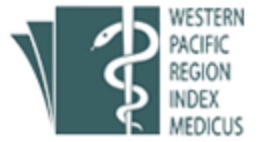Photobiomodulation Therapy for Wound Healing: A Narrative Review
DOI:
https://doi.org/10.31436/imjm.v24i01.2545Keywords:
Photobiomodulation, Wound Healing, Light Therapy, WavelengthAbstract
Photobiomodulation is a therapy method that employs light to stimulate cellular function. It has emerged as a promising approach to healing wounds due to its potential to accelerate tissue repair. Wounds can vary in severity from minor cuts to more serious injuries that involve deeper tissue damage. Wound healing is the natural process of the body to repair the injured tissue that causes disruptions to the integrity of the body's tissue. It has been known that photobiomodulation has established its positive effects on wound healing in various factors by modulating the inflammatory response. This review aims to understand the efficacy of photobiomodulation and the clinical application of light transmission as a therapy in enhancing the healing of wounds. Articles on photobiomodulation and its application in wound healing were searched from the available peer-reviewed journals. Published papers were collected from PubMed, Scopus, and Science Direct using photobiomodulation, wound healing, and soft tissue as the keywords. The initial paper search yielded 124 results, and 37 full-text eligible articles were assessed in this review. In conclusion, photobiomodulation has been seen to offer a promising therapeutic approach to enhancing wound healing despite ongoing development. Continued research is essential to comprehend the full potential of photobiomodulation therapy in accelerating wound recovery. It will provide insights into future research areas on photobiomodulation, thus improving the clinical treatment modality and the patient's quality of life.
Downloads
Downloads
Published
How to Cite
Issue
Section
License
All material submitted for publication is assumed to be submitted exclusively to the IIUM Medical Journal Malaysia (IMJM) unless the contrary is stated. Manuscript decisions are based on a double-blinded peer review process. The Editor retains the right to determine the style and if necessary, edit and shorten any material accepted for publication.
IMJM retain copyright to all the articles published in the journal. All final ‘proof’ submissions must be accompanied by a completed Copyright Assignment Form, duly signed by all authors. The author(s) or copyright owner(s) irrevocably grant(s) to any third party, in advance and in perpetuity, the right to use, reproduce or disseminate the research article in its entirety or in part, in any format or medium, provided that no substantive errors are introduced in the process, proper attribution of authorship and correct citation details are given, and that the bibliographic details are not changed. If the article is reproduced or disseminated in part, this must be clearly and unequivocally indicated.










